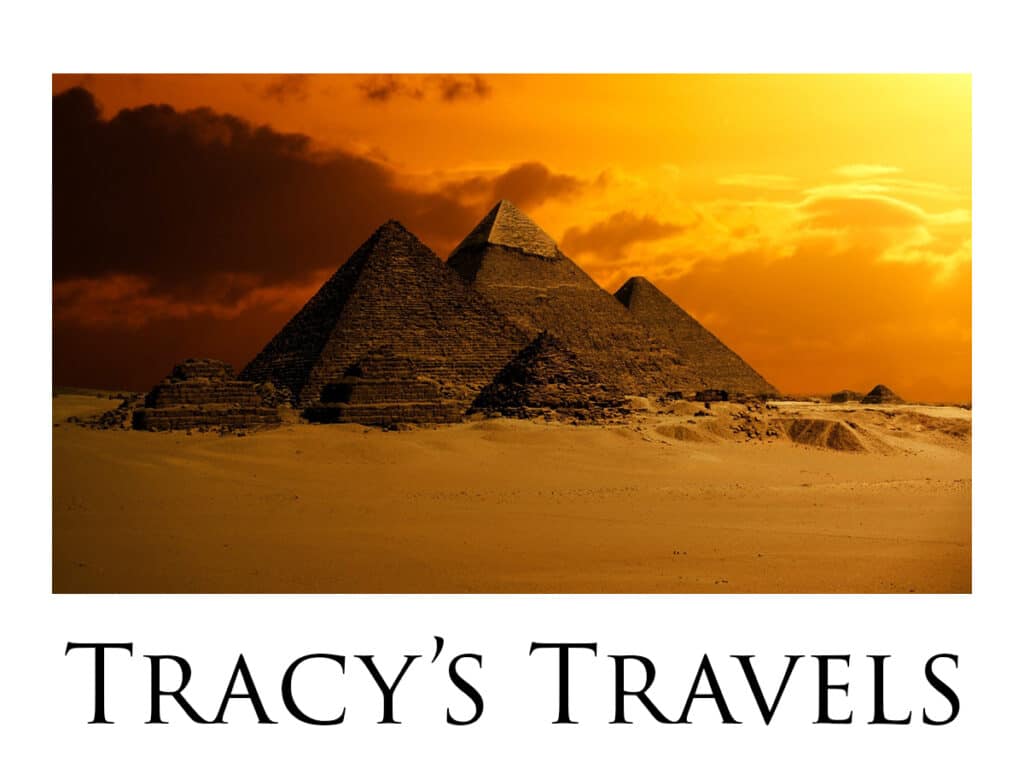A Mother-Daughter Trip
The well-preserved ruin of Pompeii is the setting for Pompeii: City on Fire. We stayed in the adorable own of Sorrento as our home base while researching this novel.
If you haven’t read Pompeii: City on Fire, you may want to return to this page after you have. There are lots of references to the specific scenes in the book.
If you’ve read it, I hope you’ll really enjoy seeing the real place where the book is set!

My research trip to Italy was even more special since I took my daughter Rachel, a senior in high school, with me. The two of us explored Rome, Venice and Pompeii for more than a week, and had a fantastic time.
Traveling Again…

After several days in Rome and Venice (check out those travel journals, too!), the tedious part of international travel begins again – navigating ourselves to the right bus for the airport, checking luggage, waiting for the plane (late), a short flight to Naples, finding the bus from the airport to the train station, finding the train to Sorrento, a one-hour train trip, then figuring out how to get to our hotel from the train station.
I snapped this photo of Rachel, mostly because of the funny guy that kept staring at her!
I am learning that much of one’s time traveling outside the United States is spent in this way – figuring things out and getting around. It helps if you research and plan ahead of time, but there are always variables. The guide book may sound as though a bus stop is easily found, but in fact (as happens tonight in Sorrento) it may take you an hour of wandering dark streets and asking people who don’t speak English to help you find it. In the end, we are unsuccessful and go back to the train station to hopefully get the bus that comes only once or twice an hour.
Where is the Bus?

We wait in the dark (not sure we’re in the right place) for a half hour, and then decide that we will walk to the hotel. It should be about a 20 minute walk, and we have a good map. The downside is that we are dragging luggage, and it’s 11:00 at night. But I refuse to pay 20 euro ($30) for a five minute taxi ride. We start down the hill toward the main street in town, our luggage rolling along with us.
At this point a blue bus pulls up. We are waiting for an orange bus, but I decide to ask the driver if he knows where the correct bus might be, even though drivers here rarely speak English. He asks where we are going, and I tell him Capo de Sorrento – the hill of Sorrento. “Si, Capo,” he says, and indicates his bus. Seriously? We were within thirty seconds of leaving this area, and this is the right bus, finally? We get on, and within five minutes we have reached our tiny hotel.
By the way, “Capo” must mean “monster hill” in Italian, and I realize along the way that dragging our luggage up and up this windy, lonely road in the dark would have been insane!! I breathe a prayer of thanks for being spared from my own foolishness.
Hotel Elios

This small pensione is of course, locked up for the night. But someone comes immediately at our knock, and we are greeted warmly by our hostess Maria (in her bathrobe) and her twenty-something son, Luca. She asks if we’ve eaten, which we have not except for vending machine cookies hours ago, but there is nothing open at this hour. In pity, she gives us a couple of containers of coconut yogurt, which is very kind. Do we need hot water tonight? Because she’s already turned it off. No. We are grateful for the tiny room and the bed, and soon collapse.
Positano, Amalfi Coast

Wanting a break between our travel day and the big day of exploring Pompeii, we’ve planned a simple sightseeing day to the Amalfi Coast and the little village of Positano. We take a public bus from a stop near our pensione along the winding, vertigo-inducing coastline.
Positano

We are dropped off at the top of this picturesque little town, which we wander for several hours. We wait out a cloudburst in a wifi café and check email, then go down to the beach to find a little restaurant and get some lunch. (Pizza. Yes. I will admit it.)
Positano

Then more wandering Positano in a lovely, relaxing day.
Evening in Sorrento

When we get back via bus to Sorrento we spend a bit of time in town, and then find a little grocery store to buy some things for breakfast and snacks. Afterwards, we find the nearest bus stop, but the bus schedule here in Sorrento is still a mystery, and we have little confidence that one is actually coming for us. Our resolve is further tested when it begins to pour yet again. We knew November was the rainy season in Italy. Indeed.
Pompeii, at Last

The next morning, we get the bus to downtown Sorrento once more, then take a train a few stops north to the ruins of Pompeii. We enter the city through the Porta Marina Gate, eager to begin exploring the place we’ve come to Italy to see! It’s a wondrous place, frozen at the moment Vesuvius erupted, excavated nearly two millennia later to reveal its secrets.
[Spoiler alert! The following pictures reference events and locations in Pompeii: City on Fire, so if you haven’t finished reading the novel, you may want to come back when you’re done!]
Plaster Casts

One of the first things we see is the section of the Forum fenced off to contain many of the plaster casts made of actual victims. It’s a poignant way to begin our exploration – remembering that people lived and loved and died here, some in horrific ways. Later, when I’m writing Pompeii: City on Fire, I’ll draw on some of these plaster casts for inspiration for characters. [You’ll find this character in Chapter 53]
The Basilica

Also in the Forum, at the end, is the Basilica. This structure was not a church as the name might seem to imply, but more like the “law offices” of the town. Later churches were designed to imitate the architecture, and thus called “basilicas.” This sheltered area is where Ariella and Micah hide in Chapter 44.
In the Forum, Pompeii

This picture was taken in the Forum, looking toward Mt. Vesuvius. The columns behind me are what remain of the Temple of Jupiter and the Capitolium, at the north end of the Forum.
The Forum Baths

Inside the Forum Baths, in the apodyterium, where Cato meets with the city leaders in Chapter 22.
The Forum Baths

The forum baths remind me of an ancient hot-tub!
House of the Dancing Faun

The House of the Dancing Faun has been so-named by archaeologists for the statue of dancing faun in its atrium. This is the house I used as the inspiration for Cato’s villa.
Temple of Isis, Pompeii

One of the temples of Pompeii, unique since Isis is actually an “imported” god from Egypt, which was rather fashionable at the time.
Street of Pompeii

A typical Pompeii street, including the large stepping stones from one sidewalk to the other, to raise pedestrians out of the daily rush of water that cleaned the streets. One could easily get lost in the city, and we rely on our audio tour to guide us past fountains on every major corner, over stepping stones and through scattered temples. We feel an unexpected kinship with the past as we take in shops and restaurants, houses with frescoes like wallpaper, gardens, athletic centers, theaters and swimming pools.
Thermopolium – Ancient Fast Food

A thermopolium, the ancient equivalent of a fast food counter, where Cato stops for dinner in Chapter 16.
The Palaestra

This is the palaestra, the city’s main location for athletic training, alongside Cato’s vineyard and the arena.
The Arena in Pompeii

The Pompeii Arena, the oldest known Roman amphitheater, at the end of town. This is where Ariella fights in the games.
Arena – Outer Staircase

Outer staircase of the arena, leading to the seats on the upper levels.Another View of the Arena

Pompeii Arena Corridor

Inside the Pompeii Arena, in one of the corridors where Arielle waits for her turn in the games in Chapter 24.
Inside the Arena

Rachel and I in the center of the Pompeii arena, with one seating area behind us.
Gladiator entrance

Looking toward the end of the arena, to the gladiators’ entrance.
Gladiator Training Barracks in Pompeii

The quadriporticus, the city’s older palaestra, was converted into barracks and a training yard for gladiators. It adjoined the city’s theater, and this is where Cato and Portia stroll during the theater intermission in Chapter 5, where he first sees Ariella.
Gladiator Training Barracks

Another view of the gladiator barracks and training yard. Ariella’s cell is located along its perimeter.
Municipal Building in Pompeii

Municipal Buildings in the Forum, where Cato registers for the election in Chapter 23.
Pompeii Theater

The theater, where plays were performed and speeches made. Cato and his family attend a play here in Chapter 5, and here is where Cato makes his election speech in Chapter 34.
Street of Tombs

Along the Street of Tombs, on the way to the Villa of the Mysteries, the basis for Maius’s house.
Villa of the Mysteries

A fresco in the Villa of the Mysteries, the basis for Maius’s house. This house is thought to have belonged to someone involved in the mystery rites of the Bacchanalians.
The Pompeii Forum

Back in the Forum Pompeii, with Vesuvius behind me. I feel as though I have soaked in every bit of the city through every sense, through ever pore, through my video and still camera lenses, just trying to absorb it all.
Mt. Vesuvius

Vesuvius from the Forum, as the sun sets on our fabulous day here. With a little imagination, we could believe those clouds are the beginning of an eruption…
More Adventures

It’s dark by the time we hop a bus back to our hotel, and we realize with dismay that the bus isn’t stopping. What to do? Will it loop? Or go on for hours? We decide to bail one stop beyond the Via Capo – the top of the hill. We wait for a long time for another bus to come along to take us back, but eventually get sick of waiting, and start walking back to the Via Capo. It’s a dark, winding road with a cliff wall up the side of it. Vines are hitting us in the face as we walk and there is little clearance for cars. Apparently I have not learned the lesson of the night of our arrival. It takes us more than thirty minutes to get back to the previous stop, and for most of it I’m thinking we will be mugged or flattened. At least I have the tripod, which would make a good weapon! Finally we reach the Via Capo stop. The bus pulls up immediately, but alas, it’s time for his break. We sit on the bus for another fifteen minutes before he comes back to take us to our hotel. We probably could have walked to our stop by then, I mention. Rachel is not amused.
Herculaneum

Back down to Sorrento, the train toward Naples. We are getting to be pros. We get off at Herculaneum, a town near Pompeii that was also destroyed by the eruption of Vesuvius. Unlike Pompeii, Herculaneum did not receive the layers of ash fall, instead the pyroclastic surge of molten rock and mud buried the city in minutes.Naples Museum

After Herculaneum we take the train to the Naples Museum, which houses monstrous amounts of Greek and Roman art. We are astonished at the level of detail preserved in some of these sculptures, and the size of some of them.
Exploring a Volcano

Back on the train to the Pompeii stop, but this time we catch a bus near the ruins, which takes us partway up Mt. Vesuvius. I have heard the term “hairpin turn” before, but never seen it so literally. We take a series of 180-degree u-turns up the mountain, each one of which feels like the bus is swinging so wide we will go over the edge. When we alight, the temperature has dropped considerably.
Climbing Mt. Vesuvius

The bus can’t take you all the way to the top. For that, you must climb. It takes about thirty minutes of criss-crossing up the side. At the approach of each turn, we assure each other that it must be “just around the next bend.” Finally we reach the crater, which is colder and blacker and deeper than I’d expected. Silence reigns here, an eerie silence like the surface of the moon. There is fog everywhere and we are in the clouds. We can’t see off the side of the volcano, and the whole experience is a bit surreal. I wonder how many Pompeiians would have made this climb, without benefit of the bus. Below us, I know, lies the city of Naples. Do they stare up at the mountain and wonder when she’ll rain fire again?
Atop a Volcano

We collect a backpack full of volcanic rocks – souvenirs for my readers – wander around the crater watching the steam hiss out of fissures, and then start our trip back down, timing it to get back to the bus before it leaves. Our calculations prove faulty, and the bus is gone. We sit for awhile in a little shack, eating strange sandwiches while waiting for the next bus, the last of the day, to return us to Pompeii.
It’s been a grand trip, but it’s not over. We still get to spend another day in Rome!








